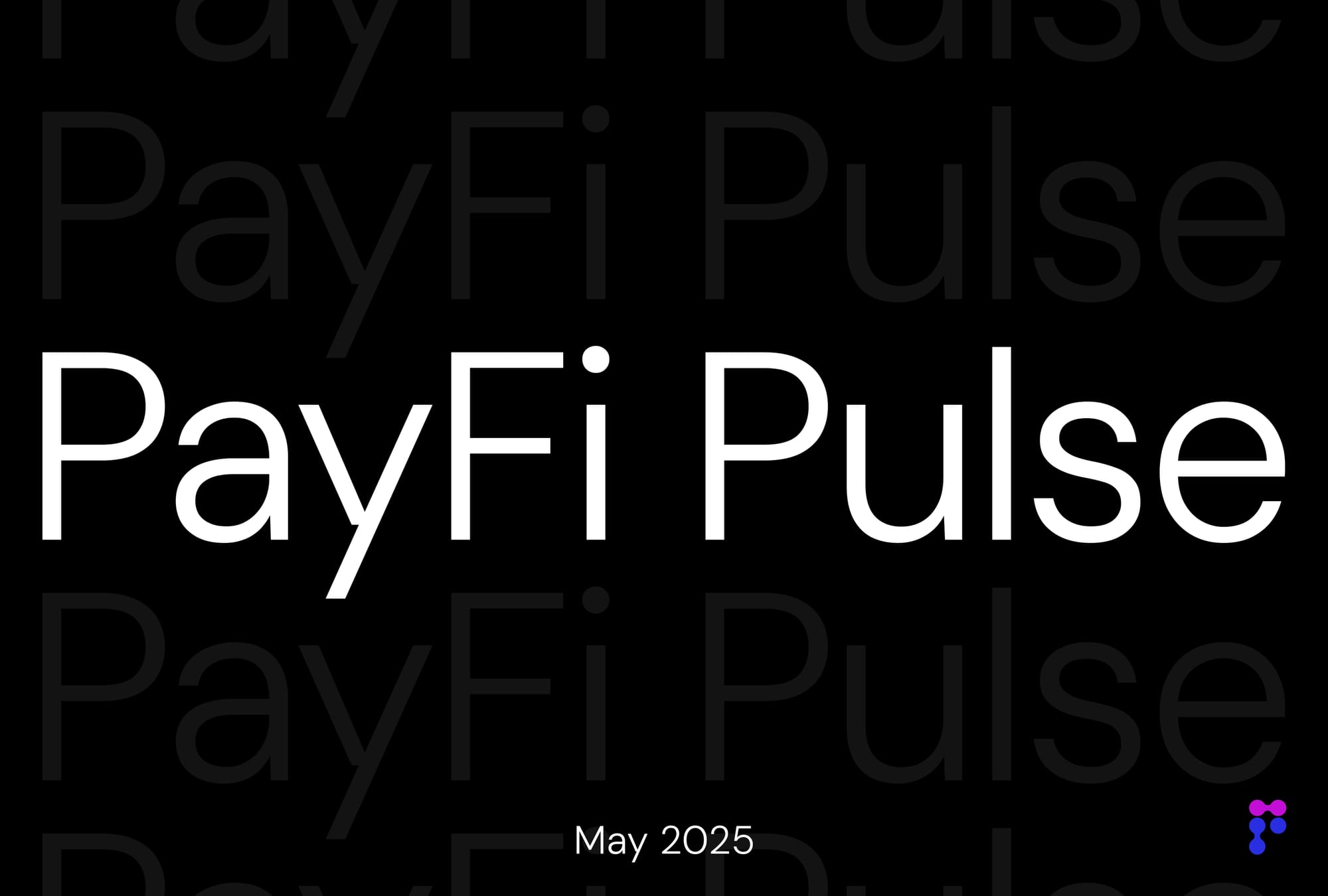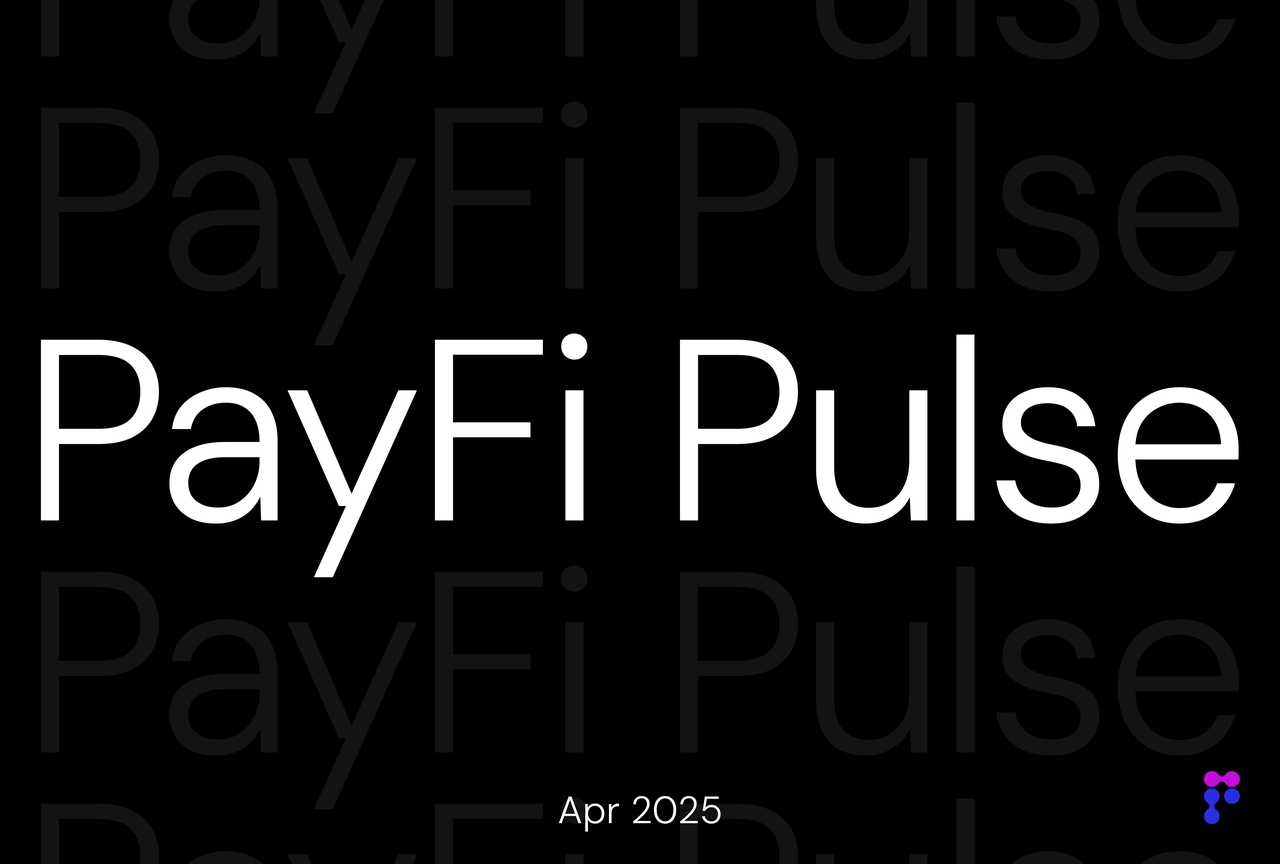The PayFi Report 2025 (May) by PolyFlow
On May 20th, the United States Senate achieved a landmark moment in stablecoin regulation by overwhelmingly approving a procedural motion for the Guiding and Establishing National Innovation for U.S. Stablecoins (GENIUS) Act. This marks the first meaningful federal attempt to create a comprehensive framework for stablecoins, aiming to provide regulatory clarity, foster domestic innovation, enhance consumer protection, and reaffirm the dominance of the U.S. dollar. This is a historic milestone.

On May 20th, the United States Senate achieved a landmark moment in stablecoin regulation by overwhelmingly approving a procedural motion for the Guiding and Establishing National Innovation for U.S. Stablecoins (GENIUS) Act. This marks the first meaningful federal attempt to create a comprehensive framework for stablecoins, aiming to provide regulatory clarity, foster domestic innovation, enhance consumer protection, and reaffirm the dominance of the U.S. dollar.
This is a historic milestone. Circle's stock market performance has been highly sought after. Recall when Grayscale won its judicial battle for the ETF, which propelled the BTC ETF market to flourish. Similarly, the GENIUS Act is poised to drive the rapid development of the stablecoin market, with Circle's outstanding stock market performance set to benefit first.
As stablecoins edge closer to mainstream adoption, infrastructure players like PayFi, designed for scalable on-chain finance, are well-positioned to lead the next wave of adoption.
Data Signals: Usage Is Rising, But What’s Really Happening?
The GENIUS Act's legislative progress has spurred a notable surge in the cryptocurrency market. The rising value of crypto assets, coupled with the growing clarity of regulatory frameworks, has further accelerated the adoption of stablecoin data. Data from the Visa Stablecoin Dashboard reveals that the number of transactions in May nearly doubled compared to April. This represents a significant shift from the previous months, during which stablecoin data saw only modest and steady growth.
Despite the significant increase in numbers, the amount of stablecoins used for payments remains unknown, as stablecoin data primarily reflects crypto asset trading activities. Thus, we turn to Artemis' article "The Future of Stablecoins," which reveals the overall transaction landscape built on the current stablecoin supply of $24 billion.
Though the annual stablecoin transaction volume is as high as $3.1 trillion, there are many misconceptions about their widespread adoption. The so-called $3.1 trillion annual transaction volume is highly misleading. Thirty-one percent of it comes from MEV bots that repeatedly use the same funds through thousands of cycles per day. The actual transaction volume involving human participation is far lower than what the data suggests.
Moreover, there is a phenomenon of excessive wealth concentration in the stablecoin field that is little known. Although there are 150 million stablecoin wallets, 99% of them have a balance of less than $10,000. Meanwhile, just 20,000 mysterious wallets control $76 billion, which is 32% of the total supply. These wallets are neither exchanges nor DeFi protocols and are reported as a "gray area," the meaning of which is still unclear.
It is worth noting that the real explosive growth of stablecoins has occurred in the past six months. Since the summer, the transaction volume of DeFi stablecoins has soared from $100 billion to $600 billion. In addition, meme coin trading alone has generated $500 billion in stablecoin flow, accounting for 12% of the annual transaction volume.
However, the criteria we use to measure the success of stablecoins are misplaced. A decline in Total Value Locked (TVL) may not indicate reduced usage but could instead reflect technological progress and increased efficiency. An increase in transaction volume may simply mean an increase in bot activity. There are fundamental issues with the metrics we use to track adoption rates.
Overall, we can see that the total supply of stablecoins will inevitably continue to grow. With the continuous improvement of regulatory legislation, the stablecoin scene, which was once mainly used for crypto asset trading, will gradually shift to real payment scenarios.
Genius Act Propels the Market
This legislative advancement occurs amid a period of historic growth for the stablecoin ecosystem, where these digital assets now account for the majority of on-chain transaction volume. Although the GENIUS Act is still in its draft stage and awaits final approval, this move has streamlined the legislative process towards reaching Trump‘s signing desk.
Stablecoins Transition from Trading Tools to Payment Rails
The GENIUS Act introduces a formal definition for “Payment Stablecoins”: fiat-pegged digital assets used for payments and recorded on cryptographic distributed ledgers. Critically, issuers must redeem them at face value, cannot pay interest, and are thus clearly differentiated from securities. This designation aims to prevent these assets from being treated as investment products.This subtle but powerful reclassification could transform stablecoins from trading utilities into everyday payment tools
Where are Payment Stablecoins Used?
Artemis' latest research offers a comprehensive dataset from 31 stablecoin-based payment companies that process transactions for end users. This includes data from a survey of 20 companies and estimates from 11 others, covering various sectors such as B2B, P2P, B2C, card payments, and prefunding. It is the most extensive report to date, capturing the majority of transactions in the emerging stablecoin payment field.
Key findings from the research include:
- From January 2023 to February 2025, stablecoin payments reached $94.2 billion.
- As of February 2025, the annualized run rate for stablecoin payments was $72.3 billion.
- B2B payments led with an annualized run rate of $36 billion, followed by P2P at $18 billion, card-linked payments at $13.2 billion, B2C at $3.3 billion, and prefunding at $2.5 billion. All sectors except P2P showed rapid growth.
Among the companies surveyed, Tether's USDT is the most widely used stablecoin, accounting for 90% of transaction volume, with Circle's USDC following. Tron is the most popular blockchain for transactions, ahead of Ethereum, Binance Smart Chain, and Polygon.
This data underscores the growing role of stablecoins in payments. As regulatory frameworks improve, stablecoins will increasingly shift from crypto trading to real-world payment applications, driving further growth in total supply.
Investment Trend in May
Stablecoin payment firm BVNK has received a strategic investment from Visa through Visa Ventures. This move underscores BVNK's mission to transform global payments via stablecoin technology. BVNK's $50 million Series B funding round in December 2024, led by Haun Ventures and supported by major investors like Coinbase Ventures and Tiger Global, has fueled its growth.
Visa Onchain Analytics (2025) reveals a seismic shift in payment technology: $27 trillion in stablecoin volume processed globally across 1.25 billion transactions. This isn't just incremental progress—it's a fundamental transformation in how money moves. BVNK was an early adopter, recognizing stablecoins as a global payment rail and an alternative to traditional banking. Their infrastructure is designed to automate and scale stablecoin payments for businesses of all sizes.
The partnership with Visa, a payments innovation leader, merges Visa's global network expertise with BVNK's stablecoin infrastructure, unlocking new opportunities in the digital economy. As Visa's Rubail Birwadker noted, stablecoins are integral to global payment flows, and Visa's investment in BVNK keeps them at the cutting edge of commerce.
BVNK CEO Jesse Hemson Struthers highlighted that BVNK is already processing $12 billion in annualized stablecoin payment volumes, enabling rapid and efficient global transfers for customers. The combined strengths of Visa and BVNK are poised to reshape business operations in the digital age.
Plasma has successfully raised $24 million in a funding round led by Framework and Bitfinex, aimed at developing a leading blockchain platform specifically for stablecoins. This investment highlights the strong investor interest in leveraging Bitcoin's security features to create a robust infrastructure for stablecoin transactions. Plasma's initiative seeks to expand the use of stablecoins by integrating them into the Bitcoin ecosystem, offering enhanced security and reliability. The funding underscores confidence in Plasma's vision and reflects the growing interest in stablecoins and their potential to transform digital finance by enhancing transaction efficiency and security.
Beam has secured Series A funding to expand its operations and enhance its platform. This round of investment will be used to further develop Beam's technology and grow its team, allowing the company to better serve its customers and innovate in its market. The funding signifies confidence in Beam's potential and its commitment to delivering advanced solutions in its field.
Overall in May
With the regulatory landscape becoming more defined, particularly through the Genius Act’s clear delineation of payment stablecoins, the potential applications for stablecoins are on the cusp of a significant expansion. Circle’s triumphant debut on the public market has not only set a new standard but also symbolized a major milestone for crypto-native projects entering the mainstream. Simultaneously, BVNK’s strategic investment from established payment giants like VISA marks a pivotal moment, as it represents the traditional financial sector’s earnest foray into the stablecoin ecosystem.
These moves clearly indicate that the convergence of traditional finance and stablecoins is not just imminent but already underway. As we look to the future, it is evident that an increasing number of traditional financial institutions will be drawn to the stablecoin market. The stage is being set for a profound integration and symbiotic evolution between traditional finance and the burgeoning stablecoin sector. Undoubtedly, this is a development worth watching closely.
About PolyFlow
PolyFlow is an innovative PayFi protocol designed to connect real-world assets (RWA) with decentralized finance (DeFi). As the infrastructure layer of the PayFi network, PolyFlow integrates traditional payments, crypto payments, and DeFi in a decentralized manner to handle real-world payment scenarios. PolyFlow provides the necessary infrastructure to ensure compliance, security, and seamless integration of real-world assets, paving the way for a new financial paradigm and industry standards.
SOCIALS
To find out more about PolyFlow and keep up with our latest developments, follow the official channels.📣Mirror | 💬 Global Community | 👾 Discord| 🐦 Twitter/X | 🌐 Website
CONTACT US
support@polyflow.tech

The PayFi Report 2025 (May) by PolyFlow
On May 20th, the United States Senate achieved a landmark moment in stablecoin regulation by overwhelmingly approving a procedural motion for the Guiding and Establishing National Innovation for U.S. Stablecoins (GENIUS) Act. This marks the first meaningful federal attempt to create a comprehensive framework for stablecoins, aiming to provide regulatory clarity, foster domestic innovation, enhance consumer protection, and reaffirm the dominance of the U.S. dollar. This is a historic milestone.

The PayFi Report 2025 (Apr) by PolyFlow
Despite the continued buzz surrounding PayFi, its foundation relies significantly on the broad adoption of stablecoins. In the April market, we note that with regulatory clarity under the new U.S. framework, many fintech giants are entering the arena. Whether by participating in stablecoin issuance, developing their own stablecoin payment networks, or entering through investments and acquisitions, fintech firms are poised to dominate the future stablecoin market, as to the further application of

Interview with PolyFlow CFO: When Payments Build Onchain Credit — PayFi Reconstructs Financing
In the traditional financial system, “payment” is often regarded as the end state of value transfer. But in the world of PayFi, it marks the beginning of value creation. When Visa can process tens of thousands of transactions per second but still requires several days for cross-border settlement, and when small and medium-sized enterprises shoulder a 6.5% cost on international payments while still having to pre-fund transactions, a financial revolution is quietly fermenting through on-chain paym